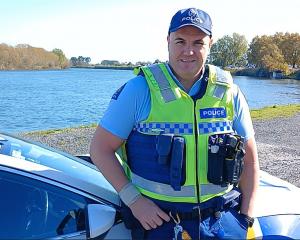The trust wanted to make a ''big investment'' at its roughly 70ha Catlins reserve, which it bought in 2009, the trust's field manager, Dave McFarlane, said.
''It's not our biggest reserve by land area, but it's certainly got a lot of potential.''
Once plans were firmed up over the next 12 to 18 months, a substantial fundraising effort would be required, but the trust had had a meeting with a landscape architect at the reserve and a meeting with a builder was planned.
''We're very close to deciding what we're going to do.''
He said future predator control, including the possible predator fence, entailed ''big choices''.
''And they've all got dollar figures attached to them.''
A bigger grid of traps would require the trust to provide accommodation, or a ''work base'', on site.
It could provide accommodation for planting groups, researchers, the trust's staff and potentially those doing predator-control work who wanted to overnight at the reserve.
After ''two or three poor seasons'', the penguin population at the Catlins breeding colony was under pressure.
But the penguins' ocean environment was complex and dynamic, and at least on land the predator trapping done by members of the South Otago branch of Forest and Bird was working, Mr McFarlane said.
In 2014 there were 48 yellow-eyed penguin breeding pairs at Long Point and in 2015 there were 29.
''It is a significant drop and it is certainly cause for great concern and we're certainly taking it very seriously.
''If we could trap barracouta, for example, that would be a great, but on land we are reasonably confident that what's being done is doing a reasonable job for the penguins - that's the main thing.''
South Otago Forest and Bird chairman Roy Johnstone, who has done the predator-control work in the area with Jim Young since 2010, said the number of possums and rats caught in the 120 traps used at Long Point and nearby Cosgrove Creek had dropped off significantly after the Animal Health Board (now TBfree New Zealand) intervened several years ago.
He was optimistic this trapping year, which began on July 1, would continue to show the low predator numbers achieved at Long Point for the past two years.
''We're not seeing any sign of predation on yellow-eyed penguins,'' Mr Johnstone said.
''My interpretation of what's going on is we've managed to keep down the resident population and what we're getting is what's coming in from further north, basically.
''We're catching now what's migrating into the area.''












